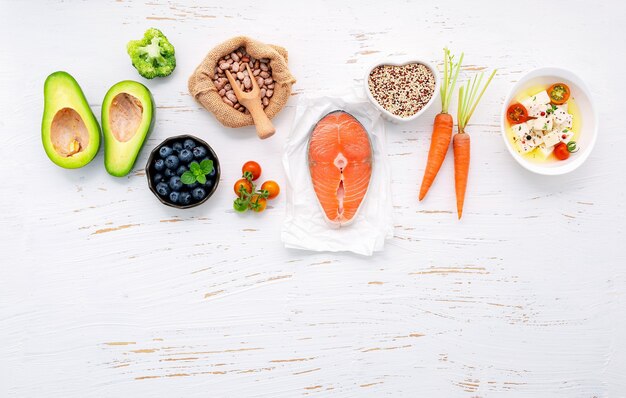Eat Smart: The Best Foods for Managing Diabetes
Managing diabetes effectively is crucial for maintaining overall health and well-being. The right diet can stabilize blood sugar levels, prevent complications, and ensure a good quality of life. But what exactly should be on your plate? Here’s a guide to foods that are particularly beneficial for blood sugar management.
Best Food Choices for Diabetes
Whole Grains
Whole grains like brown rice, quinoa, and whole wheat bread are rich in fiber, which helps control blood sugar levels. Unlike refined grains, they digest slowly, leading to gradual glucose absorption.
Lean Proteins
Incorporating lean proteins such as chicken, fish, tofu, and legumes can be very beneficial. These foods are crucial for muscle repair and do not cause blood sugar spikes. Opt for skinless chicken, grilled fish, or turkey for a healthy meal.
Leafy Greens
Packed with vitamins, minerals, and antioxidants, leafy greens like spinach, kale, and Swiss chard are low in calories and carbohydrates. Their nutrient density helps in managing diabetes by reducing oxidative stress and inflammation.
Non-Starchy Vegetables
Vegetables such as broccoli, cauliflower, and green beans are fantastic choices. These non-starchy vegetables provide essential nutrients without contributing to blood sugar increases.
Berries and Citrus Fruits
While fruit generally contains natural sugar, berries and citrus fruits like strawberries, blueberries, oranges, and grapefruit have a low glycemic index. They also provide vital vitamins and minerals while improving insulin sensitivity.
Nuts and Seeds
A handful of nuts and seeds, including almonds, walnuts, chia seeds, and flaxseeds, can help control diabetes. They offer healthy fats and proteins, which are essential for a balanced diet.
Low-Fat Dairy
Low-fat dairy products such as Greek yogurt and skim milk are not only good sources of calcium and protein but also help regulate blood sugar levels when consumed in moderation.
Simple Tips for Meal Planning
- Balance Your Plate: Fill half with vegetables, a quarter with whole grains, and the remaining quarter with lean protein.
- Portion Control: Keep an eye on serving sizes to avoid overeating.
- Stay Hydrated: Water is the best choice. Avoid sugary drinks.
- Meal Timing: Try to eat at the same time every day to help keep blood sugar stable.
Recognizing the importance of a good diet is just one aspect of managing diabetes. Sometimes, additional assistance may be required, particularly with the financial burden of consistently accessing nutritious food.
Financial Assistance and Resources
Transitioning to a healthier lifestyle can sometimes be costly, but there are resources to help manage these expenses. Here’s an overview of programs and options available:
- 💸 Food Assistance Programs: Discover programs like SNAP that offer food aid to qualifying individuals and families.
- 💳 Affordable Meal Services: Explore meal delivery services offering diabetic-friendly options at reduced prices.
- 📚 Educational Grants: Look into grants that focus on diet and nutrition education for those managing chronic illnesses.
- 🏡 Community Support: Join local health groups that provide free or subsidized wellness classes and cooking workshops.
- 💳 Credit Options: Investigate credit card options that offer rewards for grocery shopping or health-related purchases.
Taking control of your diet is a significant step towards managing diabetes effectively. Coupled with available financial aids and educational resources, achieving a healthier lifestyle is more accessible than ever. Exploring these options can ease the journey back to a balanced and healthy life.
